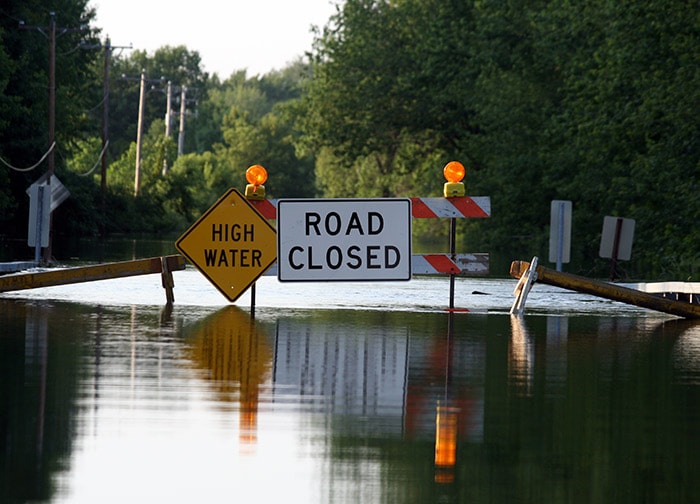Rebuilding EH Service Programs
Four jurisdictions received funding to mitigate public health threats remaining from 2017 hurricanes and ensure that facilities and systems do not present exposure hazards. Jurisdictions assessed facilities and environmental health systems, planned and implemented environmental health investigations, and monitored environmental health conditions. Learn how four jurisdictions rebuilt their environmental health service programs.

Houston, Texas, focused on improving gaps in service.
(Houston Health Department [HHD])
Goal: Increase resiliency and expedite interventions to reduce community exposure during future events
Problem
- Gaps in protocols and equipment used for response and disaster situations
- One mobile lab made it difficult to take samples at the same time
- Guidance needed for opening flooded and damaged food service establishments
- Could not share contamination info to public
What Houston Did
- Updated protocols and procured equipment to assess shelters, food service establishments, and mold after disasters and other places with high risk
- Procured two mobile labs to expand capability – Mobile Ambient Air Monitoring Laboratory (MAAML)
- Created 51 SOPs and 43 protocols for addressing priority EH issues
- Trained 87 EH workers trained on new protocols
- Hired an environmental investigator to perform mold assessment screenings
- Held three mold outreach events
- Contacted 604 targeted housing units for mold assessments
- Hired two chemists
- Attended monthly ESRI training and Environmental Health Training in Emergency Response training in Alabama
- Used email platform for sending messages regarding EH weather events; 1,000 of the people who received the email opened it
During the project period, the City of Houston experienced a catastrophic 96-inch water main break. Within 5 hours the break was bypassed, but pressure level dropped below 20 psi throughout the system. Ninety five percent of the City of Houston was under a boil water notice, impacting 13,000 FSEs. HHD and the Houston Health Authority used CDC’s Drinking Water Advisory Communication Toolbox as a framework for their response and referenced CDC’s Guidelines for Food Service Facilities.
Louisiana improved well water services to prepare for the next emergency.
(Louisiana Department of Health [LDH])
Goal: Identify private water well testing sites and develop an emergency plan for well water testing during emergency events.
Problem
- Barriers to testing damaged wells, including comms gaps between the health department and public, and gaps in knowledge about the well testing process
- Out of date private well database, with info to flag wells at risk for flooding in the future
What Louisiana Did
- Identified and entered eligible registered private wells into the Louisiana Department of Natural Resources’ database registry—updated roughly 39,000 entries each quarter
- Created a communication plan instructing private well owners and users how and when to submit water samples from private wells for testing
- Created a web-based platform to allow individuals who use emergency private well water testing services to provide feedback to LDH on process improvement
- Developed and disseminated an educational video on how private well owners and users can care for, maintain, and take water samples from their private wells before, during, and after emergencies and disasters.
Puerto Rico strengthened the EH workforce, conducted assessments, and prepared for outbreak response after disasters.
(Puerto Rico Department of Health [DOH])
Goal: Restore and enhance EH surveillance and reporting; environmental health assessments, outbreak detection, response, and investigation; and health education and promotion activities to improve public health.
Problem
- Massive damage increased environmental public health threats
- DOH needed protocols, updated equipment, staff training, and systems to support food and water services during an emergency
What Puerto Rico Did
- Hired 26 food inspectors
- Hired 11 EH specialists
- Hired two radiological health inspectors
- Hired one milk rating officer and one milk certifier
- Hired one physicist to update radiological health and safety regulations
- Procured equipment and rebuilt the EH workforce to conduct assessments and reconstitute EH services.
U.S. Virgin Islands invested in staffing and equipment to build a strong EH workforce.
(U.S. Virgin Islands Division of Environmental Health [USVI DEH])
Goal: Develop protocols, procedures, and operating guidelines and support staff so the division can provide much-needed, legally mandated EH services.
- Understaffed DEH
- Outdated SOPs and health codes
- Unprepared for emergency response
What USVI did
- Reviewed and provided recommended updates to VI Code to reflect modern environmental health regulations
- Purchased inspection and outbreak investigation equipment
- Developed USVI DEH protocols and policies
- Hired and trained personnel to perform environmental health facilities inspections